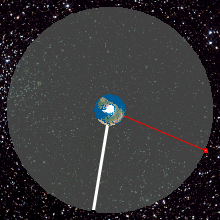LATEST EVENTS AND HAPPENINGS
What's Happening...

We, here at CSEP Central, are so excited to inform everyone about our research and latest community events. We’re even MORE excited to showcase the work of other Citizen Science Education Program schools/organizations.
The "also known as" CSEP experience is being part of the Clubhouse for Scientists (Jr) of Extraordinary Potential! We learn from what others are doing and we get energized and empowered.
On this page, we’ve listed a few of the things in which the students of CSEP Central are involved for 2019. We can’t wait to add to the list with what others are doing!
The "also known as" CSEP experience is being part of the Clubhouse for Scientists (Jr) of Extraordinary Potential! We learn from what others are doing and we get energized and empowered.
On this page, we’ve listed a few of the things in which the students of CSEP Central are involved for 2019. We can’t wait to add to the list with what others are doing!
GLOBE PROGRAM EVENTS
|
The GLOBE program provides so many opportunities for students of all ages to develop skills as budding scientists. Three of those opportunities are the International Virtual Science Symposium (IVSS), the US Regional Student Research Symposia (SRS), and the Annual Meeting with Student Field Research Experience. Go online to the GLOBE website for more information.
CSEP Central students will be participating in the IVSS, the Northeast/Midatlantic SRS and the Annual Meeting. Remember, you can always "Contact Us" for student or teacher advice on what it means to participate in these events! |
globe Watercooler
GLOBE Teacher Watercooler Meet-ups are a way to participate in the U.S. GLOBE Professional Learning Community (PLC) and hear how other GLOBE teachers use GLOBE with their students. At the January 2019 Watercooler, CSEP Central Coordinator, Vicky Gorman, talks about getting started with GLOBE, her student-led Citizen Science Education Program (CSEP) and their experiences at the Student Research Symposia (https://www.globe.gov/web/united-stat...) and 2018 GLOBE Learning Expedition (https://www.globe.gov/news-events/mee...).
goes
 Two GOES in same orbital plane.
Credit: author of original simulation = Francisco Esquembre author of Easy Java Simulation = Francisco Esquembre - Own work
Two GOES in same orbital plane.
Credit: author of original simulation = Francisco Esquembre author of Easy Java Simulation = Francisco Esquembre - Own work
Now, you might think "GOES" is a form of the verb "to go," but CSEPers know GOES stands for Geostationary Operational Environmental Satellites. GOES are approximately 22,300 miles above Earth and are situated "over" the Equator. GOES orbit at the same speed the Earth rotates. This means that GOES "see" the same image 24/7, and that image is quite expansive.
US GOES have been around since the 1970's, but the latest US series, the GOES-R series, is relatively new to the scene. The GOES-R series includes GOES-R, S, T, and U. GOES-R and S are in space and have earned the titles GOES-16 and 17, respectively. GOES-T and U have not yet launched. GOES-16 is also known as GOES-East and 17 is known as GOES-West.
So why is this important? Well, GOES are weather satellites, and the GOES-R series boasts amazing advancements in instrumentation. One particular instrument, the Advanced Baseline Imager (ABI), has a 3-4-5 advantage over its predecessors. The ABI can produce images three times faster with four times better spatial resolution using five times more electromagnetic spectral channels to gather data. Students who learn about GOES-16 and 17 are excited that such an efficient and effective weather satellite exists.
The GOES-R series Education Proving Ground is based out of the Cooperative Institute for Meteorological Satellite Studies (CIMSS) at the University of Wisconsin in Madison, WI. This year, the Education Proving Ground is hosting a GOES-R series Virtual Science Fair (VSF). Check it out!! Two teams of students from CSEP Central will be participating in the VSF, so as usual, we’re here if you (students and teachers) have any questions! Just "Contact Us."
US GOES have been around since the 1970's, but the latest US series, the GOES-R series, is relatively new to the scene. The GOES-R series includes GOES-R, S, T, and U. GOES-R and S are in space and have earned the titles GOES-16 and 17, respectively. GOES-T and U have not yet launched. GOES-16 is also known as GOES-East and 17 is known as GOES-West.
So why is this important? Well, GOES are weather satellites, and the GOES-R series boasts amazing advancements in instrumentation. One particular instrument, the Advanced Baseline Imager (ABI), has a 3-4-5 advantage over its predecessors. The ABI can produce images three times faster with four times better spatial resolution using five times more electromagnetic spectral channels to gather data. Students who learn about GOES-16 and 17 are excited that such an efficient and effective weather satellite exists.
The GOES-R series Education Proving Ground is based out of the Cooperative Institute for Meteorological Satellite Studies (CIMSS) at the University of Wisconsin in Madison, WI. This year, the Education Proving Ground is hosting a GOES-R series Virtual Science Fair (VSF). Check it out!! Two teams of students from CSEP Central will be participating in the VSF, so as usual, we’re here if you (students and teachers) have any questions! Just "Contact Us."
Citizen Science Education Program (Central) Contact Us
Medford Memorial Middle School Disclaimer
55 Mill Street
Medford, NJ 08055 USA
Medford Memorial Middle School Disclaimer
55 Mill Street
Medford, NJ 08055 USA


